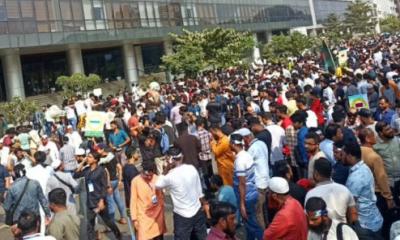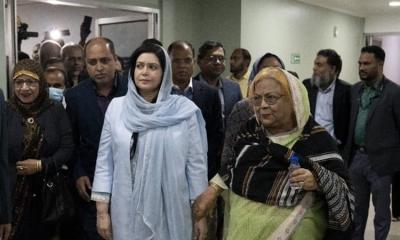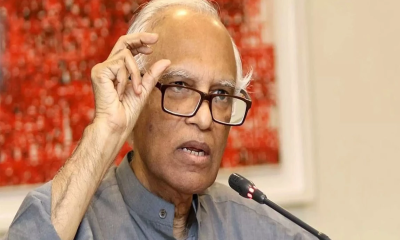Although the specific date of next national election has not yet been announced, a process is underway to find suitable houses in the capital for the prime minister and ministers of the elected government.
Hare Road is placed on the priority list for the prime minister`s residence considering security and other facilities, reports Prothom Alo.
On 7 July, the housing and public works ministry constituted a six-member high-powered committee headed by an additional secretary to make recommendation for the houses of the prime minister and the ministers.
The committee submitted a report on 20 July after visiting various places in the capital. It made a number of recommendation.
Speaking to Prothom Alo, a committee member said, “If all goes according to plan, the national election is expected to take place in February. After the election, it`s necessary to determine where the new prime minister and ministers of the government will reside.”
Former prime minister Sheikh Hasina had resided at Ganabhaban for three consecutive terms.
Following her ousting in a student-people uprising, the interim government decided to convert Ganabhaban into the "July Uprising Memorial Museum."
Construction of the museum is currently underway, and it is scheduled to be officially inaugurated on 5 August. As a result, no future prime minister or head of government will be able to reside at Ganabhaban.
The committee formed by the housing and public works mentioned in its report that State Guest House Jamuna and Bungalows No. 24 and 25 on Hare Road may be considered as potential residences for the new Prime Minister under an integrated plan. Currently, Jamuna is being used as the residence of the interim government`s Chief Adviser.
Previously, during the caretaker governments of 1996 and 2001, Chief Advisers Justice Habibur Rahman and Justice Latifur Rahman, respectively, resided in Jamuna. Fakhruddin Ahmed, the Chief Adviser of the army-backed caretaker government following the 1/11 changeover in 2007, also lived there.
According to the committee’s report, Jamuna, located at 30 Hare Road, covers approximately 3.25 acres (around 502 kathas). Bungalows No. 24 and 25, adjacent to Jamuna, are currently occupied by senior officers of a security force assigned to protect the Chief Adviser.
Another potential site for the new Prime Minister’s residence is being considered by officials at the housing and public works ministry.
The location is behind Ganabhaban, where the Dhaka International Trade Fair was previously held in Sher-e-Bangla Nagar. Since the fair was moved to Purbachal, the site remains vacant. The ministry-formed committee has visited the site but did not make any recommendations in their report regarding its suitability for the prime minister’s residence.
Multiple committee members told Prothom Alo that building a prime minister’s residence in Sher-e-Bangla Nagar could present two challenges:
The area adjacent to the Parliament building was designed by renowned American architect Louis I. Kahn, and constructing a large new structure there would be inappropriate.
Creating and approving a new design for such a site would be time-consuming.
Given these considerations, the committee believes that State Guest House Jamuna and its surrounding area on Hare Road would be the most suitable location for the new head of government’s residence.
Why are new residences being sought for ministers?
There are currently 15 bungalows for ministers on Minto Road and Hare Road, and three apartment buildings on Bailey Road collectively known as the “Ministers’ Apartments.” These apartments can accommodate 30 ministers, with each flat measuring about 5,000 square feet. Additionally, a government bungalow in Gulshan has intermittently housed various ministers. Altogether, there is housing for 46 ministers.
So why is new housing being sought for ministers of the incoming government?
According to sources at the public works ministry, of the 30 ministerial flats, 12 are currently occupied by judges of the Supreme Court. Of the remaining 18 flats, 14 are being used by two advisers, four special assistants to the Chief Adviser, four election commissioners, and two commissioners from the Anti-Corruption Commission (ACC), as well as other senior government officials.
Although there are separate flats designated for judges and bureaucrats — many of which remain vacant — the Government Housing Directorate stated that it`s not illegal for high-ranking officials to stay in the Ministers’ Apartments.
However, a former judge told Prothom Alo on condition of anonymity that it is unethical for judges to reside in the same complex as ministers (now advisers).
A 20-storey residential building exists in Kakrail for Supreme Court judges, constructed on 1.5 acres of land and housing 76 flats, each measuring about 3,500 square feet. As per the housing ministry, 24 flats are still vacant there. Similarly, Easkaton Road has high-rise residential buildings for secretaries, and flats remain unoccupied there as well.
Despite this, some secretaries are still residing in the Ministers’ Apartments, raising further questions.
Each flat in the Ministers’ Apartment includes: Four large bedrooms, one drawing room, one office room, one living room, one dining room, one kitchen and six bathrooms.
Security is provided around the clock by police and Ansar personnel at both the reception area and the main gate.
A senior official of the public works ministry told Prothom Alo that since many of these flats are currently occupied by judges and high-ranking officials, it would be awkward to evict them once the new government takes office. Hence, new housing is being sought for incoming ministers as a precautionary step.
Interim government to decide
Bungalow No. 33 on Minto Road has been allotted to National Security Adviser and High Representative for the Rohingya Issue, Khalilur Rahman. Adjacent Bungalow No. 34 has been allotted to education adviser CR Abrar.
According to the committee’s report, Bungalow 33 measures 90 kathas and Bungalow 34 97 kathas, totaling 187 kathas, though only two individuals live there. Previously, two ministers lived in these two bungalows. The committee suggests that a modern residential complex can be built here to house ministers and other senior officials in the new government.
A committee member told Prothom Alo that a six-storey building on this land could accommodate at least 12 ministers.
Similarly, Bungalow No. 21 on Bailey Road has been allotted to food adviser Ali Imam Majumder, and Bungalow No. 20, next door, is currently occupied by the Chairman of the International Crimes Tribunal-1.
Combined, the two properties cover 121 kathas. A modern complex built on this land could also accommodate 12 ministers or officials of similar rank, according to the committee.
Beyond these, the committee has proposed constructing ministerial residences at two abandoned government properties — one in Dhanmondi (Road No. 2, House No. 120), covering 20 kathas, and another in Gulshan (Road No. 113, House No. 20), covering 21 kathas.
According to the committee’s report, if the government wishes, these sites can also be developed into residences for ministers.
On 20 July, Faruk Ahmed, additional secretary of the housing and public works ministry and head of the committee, told Prothom Alo over the phone, “We have submitted our recommendations regarding housing for the new prime minister and ministers of the elected government. It is now up to the interim government to make a decision.”




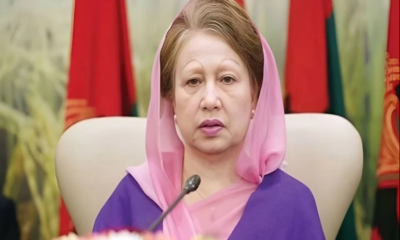
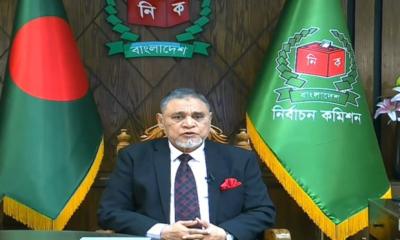
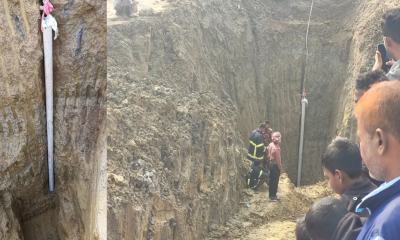
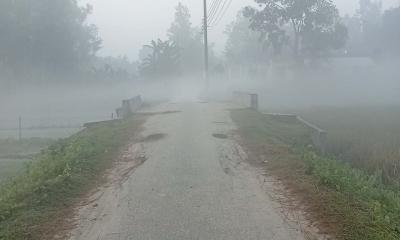
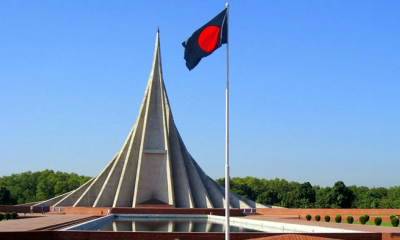


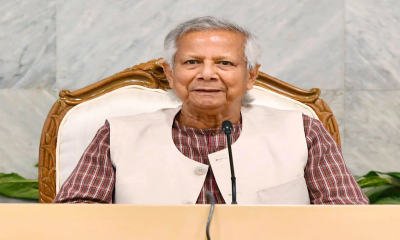
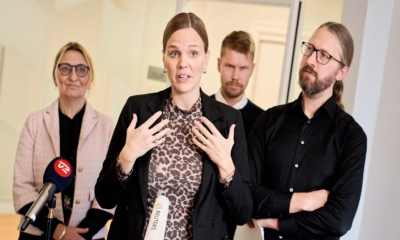

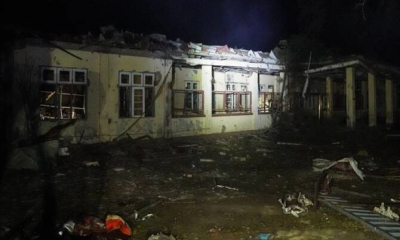

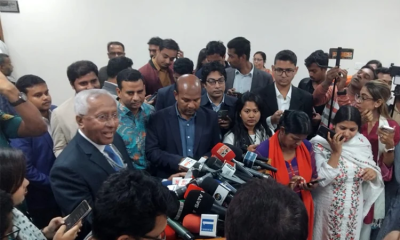

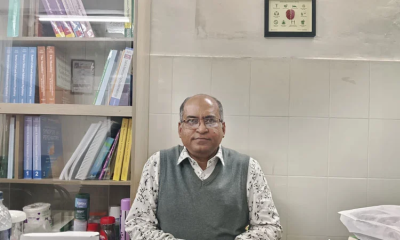




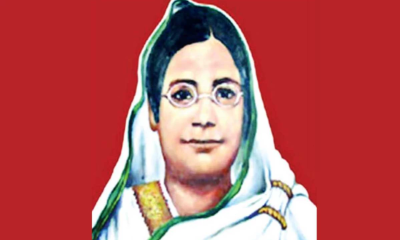


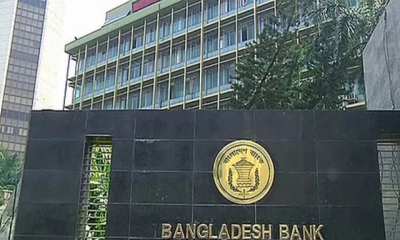
-20251207131533.jpg)
